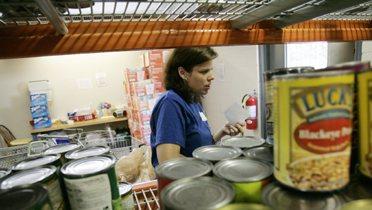An analysis of the location of poverty in America, particularly in the nation’s 95 largest metro
areas in 2000, 2007, and 2008 reveals that:
- By 2008, suburbs were home to the largest and fastest-growing poor population in the country. Between 2000 and 2008, suburbs in the country’s largest metro areas saw their poor population grow by 25 percent—almost five times faster than primary cities and well ahead of the growth seen in smaller metro areas and non-metropolitan communities. As a result, by 2008 large suburbs were home to 1.5 million more poor than their primary cities and housed almost one-third of the nation’s poor overall.
- Midwestern cities and suburbs experienced by far the largest poverty rate increases over the decade. Led by increasing poverty in auto manufacturing metro areas—like Grand Rapids and Youngstown—Midwestern city and suburban poverty rates climbed 3.0 and 2.2 percentage points, respectively. At the same time, Northeastern metros—led by New York and Worcester— actually saw poverty rates in their primary cities decline, while collectively their suburbs experienced a slight increase.
- In 2008, 91.6 million people—more than 30 percent of the nation’s population—fell below 200 percent of the federal poverty level. More individuals lived in families with incomes between 100 and 200 percent of poverty line (52.5 million) than below the poverty line (39.1 million) in 2008. Between 2000 and 2008, large suburbs saw the fastest growing low-income populations across community types and the greatest uptick in the share of the population living under 200 percent of poverty.
- Western cities and Florida suburbs were among the first to see the effects of the “Great Recession” translate into significant increases in poverty between 2007 and 2008. Sun Belt metro areas hit hardest by the collapse of the housing market saw significant gains in poverty between 2007 and 2008, with suburban increases clustered in Florida metro areas—like Miami, Tampa, and Palm Bay—and city poverty increases most prevalent in Western metro areas— like Los Angeles, Riverside, and Phoenix. Based on increases in unemployment over the past year, Sun Belt metro areas are also likely to experience the largest increases in poverty in 2009.
Over the course of this decade, two economic downturns translated into a significant rise in poverty, nationally and in many of the country’s metropolitan and non-metropolitan communities. Suburbs saw by far the greatest growth in their poor population and by 2008 had become home to the largest share of the nation’s poor. These trends are likely to continue in the wake of the latest downturn, given its toll on traditionally more suburbanized industries and the faster pace of growth in suburban unemployment. This ongoing shift in the geography of American poverty increasingly requires regional scale collaboration by policymakers and social service providers in order to effectively address the needs of a poor population that is increasingly suburban.





